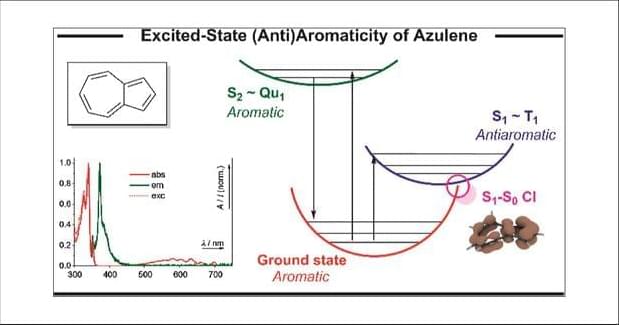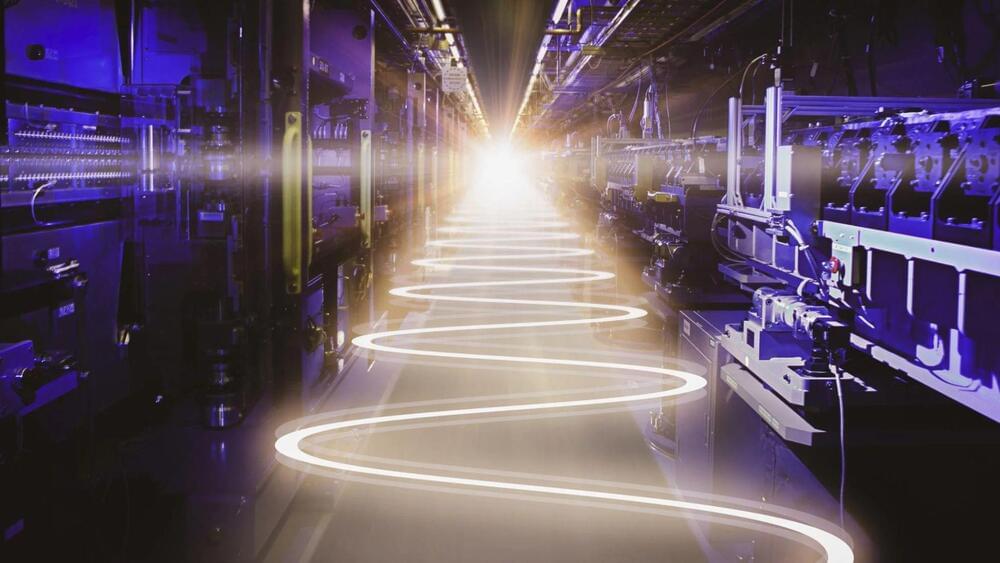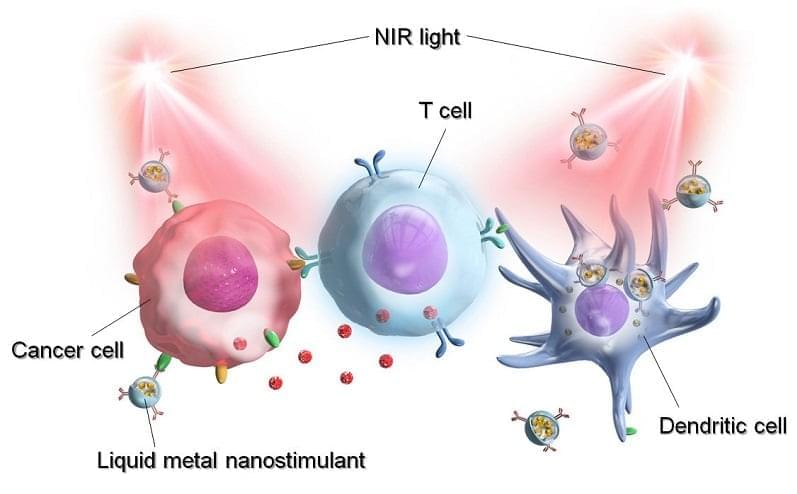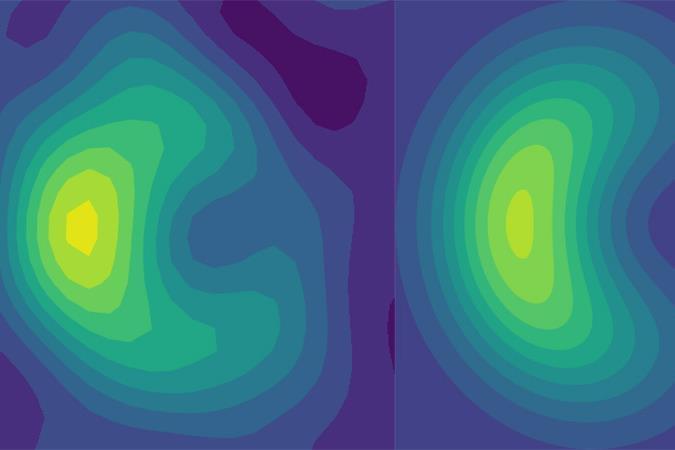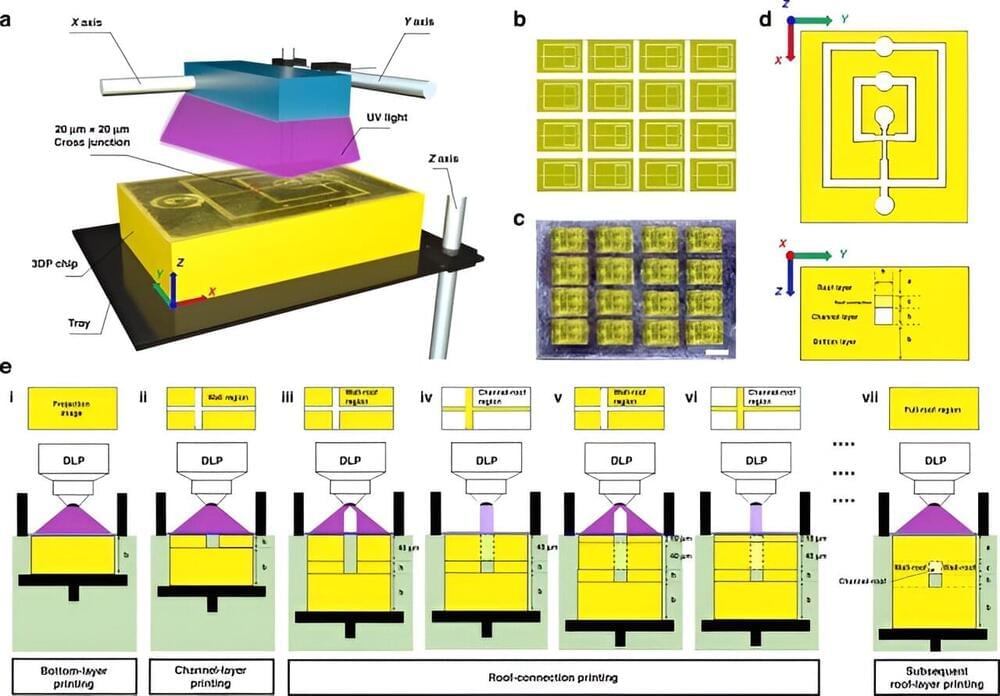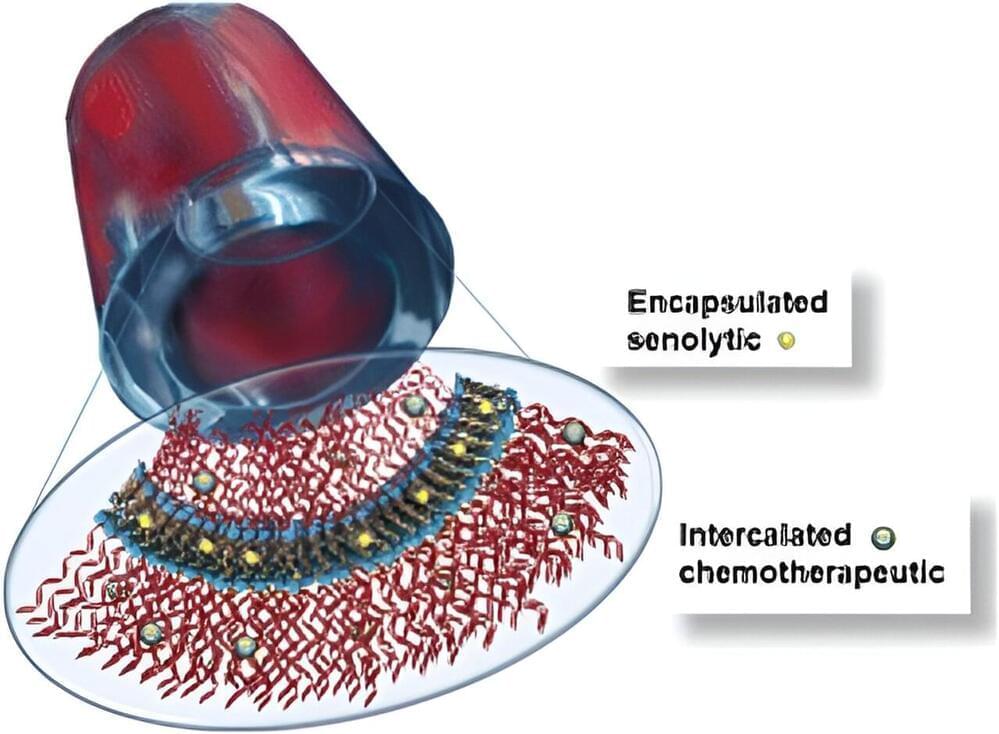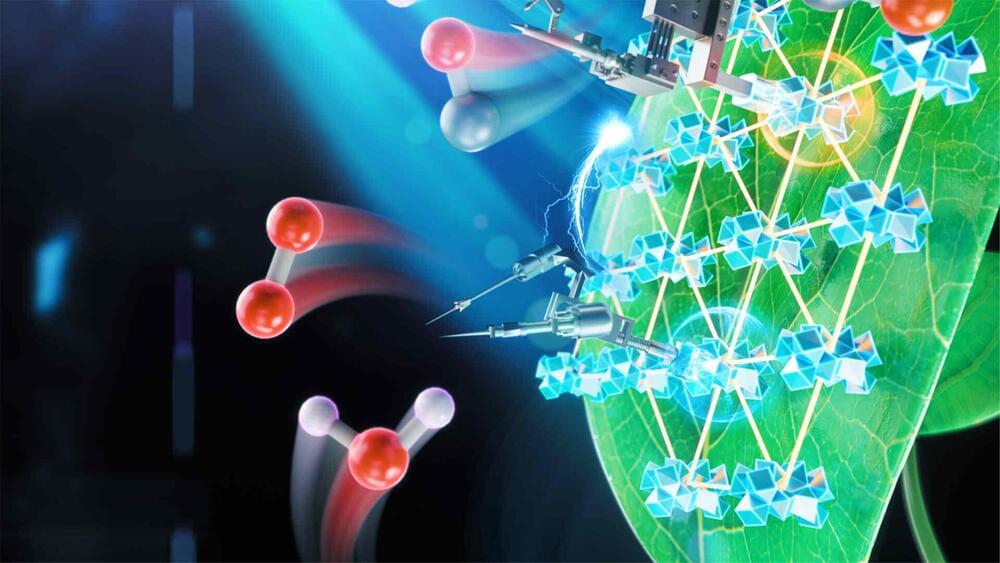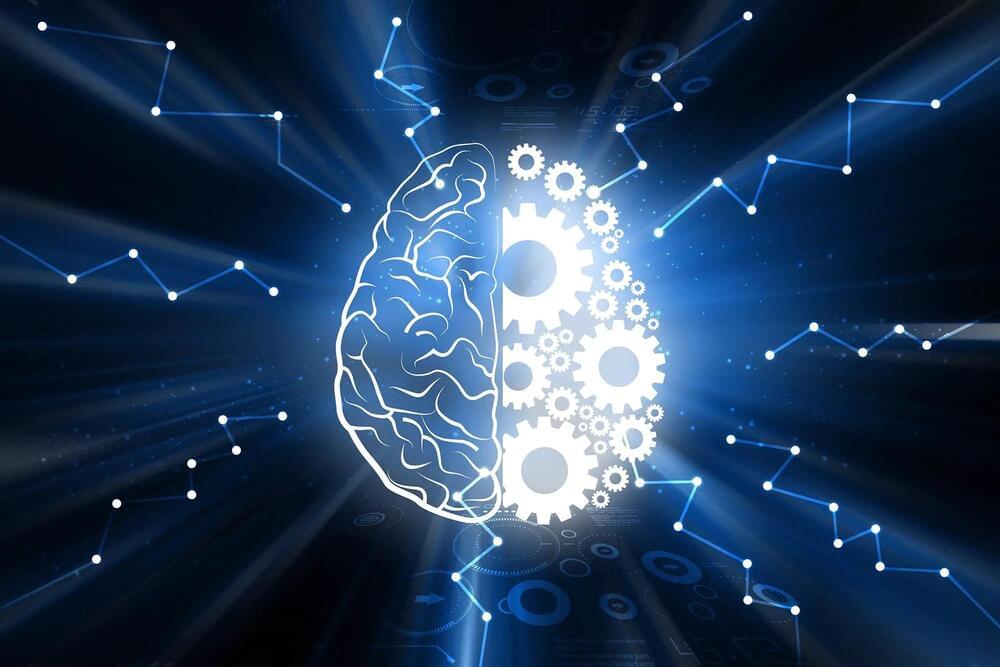Fluorescence exclusively occurs from the lowest excited state of a given multiplicity according to Kasha’s rule. However, this rule is not obeyed by a handful of anti-Kasha fluorophores whose underlying mechanism is still understood merely on a phenomenological basis. This lack of understanding prevents the rational design and property-tuning of anti-Kasha fluorophores. Here, we propose a model explaining the photophysical properties of an archetypal anti-Kasha fluorophore, azulene, based on its ground-and excited-state (anti)aromaticity. We derived our model from a detailed analysis of the electronic structure of the ground singlet, first excited triplet, and quintet states and of the first and second excited singlet states using the perturbational molecular orbital theory and quantum-chemical aromaticity indices.
Category: chemistry – Page 115
Life on a faraway planet—if it’s out there—might not look anything like life on Earth. But there are only so many chemical ingredients in the universe’s pantry, and only so many ways to mix them. A team led by scientists at the University of Wisconsin–Madison has exploited those limitations to write a cookbook of hundreds of chemical recipes with the potential to give rise to life.
Their ingredient list could focus the search for life elsewhere in the universe by pointing out the most likely conditions—planetary versions of mixing techniques, oven temperatures and baking times—for the recipes to come together.
The process of progressing from basic chemical ingredients to the complex cycles of cell metabolism and reproduction that define life, the researchers say, requires not only a simple beginning but also repetition.
With up to a million X-ray flashes a second, the laser will help study mechanisms in physics, chemistry, and biology.
The US Department of Energy’s (DOE) SLAC National Accelerator Laboratory has fired the first X-rays using the upgraded Linac Coherent Light Source (LCLS) X-ray free-electron laser (XFEL), a press release said. The upgraded version, dubbed LCLS-II, was built for $1.1 billion.
The SLAC National Accelerator Laboratory at Stanford has been building and operating powerful tools for advancing science for over six decades. The original LCLS was the world’s first XFEL, reaching its first light in April 2009.
More noninvasive cancer treatments are being made:
A research group from Japan Advanced Institute of Science and Technology (JAIST) developed light-activatable, liquid metal (LM) nanoparticles for cancer diagnosis and treatment via photoimmunotherapy. The LM nanoparticles can target and destroy cancer cells and can be fluorescently tagged to function as reporters to identify and eliminate tumors in vivo.
Gallium (Ga)-based LM nanoparticles are promising nanoscale materials for biomedical applications due to their physicochemical properties, including flexibility, easy surface modification, efficient photothermal conversion, and high biocompatibility.
Scientists discover a biomarker in stroke survivors, suggesting that chemical changes after stroke can lead to depression. The findings may pave the way toward treatment.
Quantum computing has provided new insights into a fundamental aspect of photochemical reactions that has previously proven difficult to study. The findings could improve scientists’ understanding of light-driven processes such as photosynthesis, smog formation and ozone destruction.
Photochemical processes occur when atomic nuclei and their electrons take on different configurations after absorbing a photon. Some of these reactions are guided by a quantum phenomenon called a conical intersection, where the potential energy surfaces that describe a molecule in its ground state and in its excited state converge. In these situations, quantum mechanical interference can prevent certain molecular transformations from taking place – a constraint known as a geometric phase. This limits the path that the reaction can take and affects the reaction outcome. The geometric phase has been known about since the 1950s, but due to the femtosecond timescales involved, it has never been directly observed in a molecular system.
Conventional manufacturing methods such as soft lithography and hot embossing processes can be used to bioengineer microfluidic chips, albeit with limitations, including difficulty in preparing multilayered structures, cost-and labor-consuming fabrication processes as well as low productivity.
Materials scientists have introduced digital light processing as a cost-effective microfabrication approach to 3D print microfluidic chips, although the fabrication resolution of these microchannels are limited to a scale of sub-100 microns.
In a new report published in Microsystems and Nanoengineering, Zhuming Luo and a scientific team in biomedical engineering, and chemical engineering in China developed an innovative digital light processing method.
Breast cancer in its various forms affects more than 250,000 Americans a year. One particularly aggressive and hard-to-treat type is triple-negative breast cancer (TNBC), which lacks specific receptors targeted by existing treatments. The rapid growth and metastasis of this cancer also make it challenging to manage, leading to limited therapy options and an often poor prognosis for patients.
A promising new approach that uses minuscule tubes to deliver cancer-fighting drugs directly to the tumor site while preserving healthy cells has been developed by Johns Hopkins engineers. The team’s research appeared in Nanoscale.
“In this paper, we showed that we can use nanotubes to specifically target both proliferating and senescent TNBC cells with chemotherapeutics and senolytics, killing them without targeting healthy breast cells,” said Efie Kokkoli, professor of chemical and biomolecular engineering, a core researcher at the Johns Hopkins Institute for NanoBioTechnology, and a specialist in engineering targeted nanoparticles for the delivery of cancer therapeutics.
Peter Allen.
Published in Nature Catalysis, the six chemists discovered a method that could be used to produce other chemicals.
Researchers have confirmed that human brains are naturally wired to perform advanced calculations, similar to e a high-powered computer, to make sense of the world through a process known as Bayesian inference.
In a recent study published in Nature Communications.
<em>Nature Communications</em> is a peer-reviewed, open-access, multidisciplinary, scientific journal published by Nature Portfolio. It covers the natural sciences, including physics, biology, chemistry, medicine, and earth sciences. It began publishing in 2010 and has editorial offices in London, Berlin, New York City, and Shanghai.
